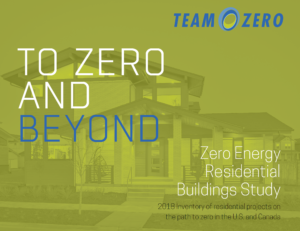The Getting to Zero Forum is the premier event dedicated to building decarbonization. With a growing number of climate emergencies across the United States and around the world, there is... Learn More
- This event has passed.
Read the 2018 Zero Energy Residential Buildings Study, the 2018 inventory of residential projects on the path to zero in the U.S. and Canada. This study documents the market growth for residential zero energy (ZE) buildings including 22,146 units that are either in  design, construction, or operation representing a 59% increase over the prior year inventory. These include single family and multifamily projects that are working to achieve zero energy or zero energy-ready performance. In addition, there are another 31,000 additional residential units in the planning stages that are not included in the current count. A zero energy, or net zero energy building, produces as much renewable energy as it consumers over a year. They typically have low energy demand and are powered by solar panels either onsite or nearby. ZE-ready homes have energy efficiency levels on par with ZE units, but are not powered with renewable resources.
design, construction, or operation representing a 59% increase over the prior year inventory. These include single family and multifamily projects that are working to achieve zero energy or zero energy-ready performance. In addition, there are another 31,000 additional residential units in the planning stages that are not included in the current count. A zero energy, or net zero energy building, produces as much renewable energy as it consumers over a year. They typically have low energy demand and are powered by solar panels either onsite or nearby. ZE-ready homes have energy efficiency levels on par with ZE units, but are not powered with renewable resources.
